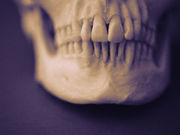Patient-, site-specific 3-D-printed templates can be created within required timeframe, are cost-saving
MONDAY, April 30, 2018 (HealthDay News) — A three-dimensional (3-D)-printed short-segment template prototype is feasible for management of complex mandibular fractures, according to a study published online April 26 in JAMA Facial Plastic Surgery.
Parul Sinha, M.B.B.S., from the Washington University School of Medicine in St. Louis, and colleagues conducted a feasibility study using maxillofacial computed tomography data of three patients with comminuted mandibular fractures who required preoperative planning with a perfected complete mandible model. Each reduced mandible design was divided to create 3-D templates for six fracture sites. Sessions were conducted in which the mandibular fracture plates were contoured in a preoperative setting against the 3-D-printed short-segment templates and in an intraoperative setting against the complete mandible model.
The researchers found that the total time for 3-D modeling and printing was less than three hours per short-segment template. Precontouring the fracture plates resulted in a median intraoperative time saved of seven, five, and seven minutes for the angle, body, and symphyseal/parasymphyseal segments, respectively, with operating room charge equivalents of $350.35, $250, and $350.35. The total costs were less than $20 for a single 3-D-printed template compared with about $2,200 for a perfected complete model.
“We demonstrate that patient- and site-specific 3-D-printed short-segment templates can be created within the timeframe required for mandibular fracture repair,” the authors write. “These novel 3-D-printed templates also demonstrate cost efficiency in the preoperative planning for complex mandibular fracture management.”
Copyright © 2018 HealthDay. All rights reserved.








